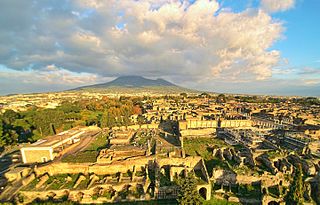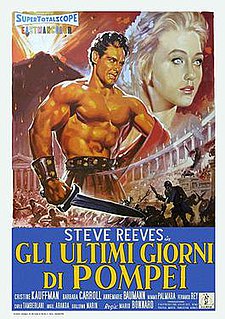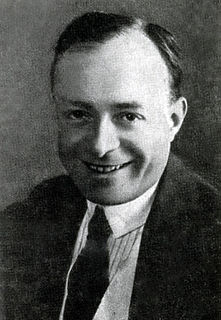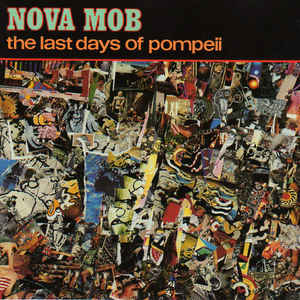
Pompeii: The Last Day is a 2003 dramatized documentary that tells of the eruption of Mount Vesuvius on August 24 79 AD. This eruption covered the Roman cities of Pompeii and Herculaneum in ash and pumice, killing everyone trapped between the volcano and the sea. The documentary, which portrays the different phases of the eruption, was directed by Peter Nicholson and written by Edward Canfor-Dumas.

Mario Caserini was an Italian film director, as well as an actor, screenwriter, and early pioneer of film making in the early portion of the 20th century. Caserini was born in Rome, Italy, and was married to early 20th-century Italian actress Maria Caserini. His 1906 film Otello is believed to be the earliest film adaptation of the William Shakespeare play Othello.

Gli ultimi giorni di Pompei (1926) is an Italian historical silent drama film. The film was directed by Carmine Gallone and Amleto Palermi based on the 1834 novel The Last Days of Pompeii by Edward Bulwer-Lytton. Original release prints of the film were entirely colorized by the Pathechrome stencil color process.

The ancient Roman city of Pompeii has been frequently featured in literature and popular culture since its modern rediscovery.

Carmine Gallone was an early acclaimed Italian film director, screenwriter, and film producer. Considered one of Italian cinema's top early directors, he directed over 120 films in his fifty-year career between 1913 and 1963.

The Last Days of Pompeii is an Italian-American 1984 television miniseries filmed at Pinewood Studios and broadcast on ABC-TV and Rai, adapting the 1834 novel of the same name by Edward Bulwer-Lytton. It was the second English-language adaptation of the book for film or television.

Pompeii was an ancient Roman city near modern Naples in the Campania region of Italy, in the territory of the comune of Pompei. Pompeii, along with Herculaneum and many villas in the surrounding area, was buried under 4 to 6 m of volcanic ash and pumice in the eruption of Mount Vesuvius in AD 79. Volcanic ash typically buried inhabitants who did not escape the lethal effects of the earthquake and eruption.

The Last Days of Pompeii is a 1959 Eastmancolor sword and sandal action film starring Steve Reeves, Christine Kaufmann, and Fernando Rey and directed by Mario Bonnard and Sergio Leone. Bonnard, the original director, fell ill on the first day of shooting, so Leone and the scriptwriters finished the film.

Mount Vesuvius, a stratovolcano in modern-day Italy, erupted in 79 AD in one of the most famous and deadly volcanic eruptions in European history, which was witnessed and documented by Pliny the Younger, a Roman administrator and poet.
Mario Bonnard was an Italian actor and film director.
Luigi Maggi was an Italian actor and film director who worked prolifically during the silent era. Working for Ambrosio Film he co-directed the 1908 hit film The Last Days of Pompeii, which launched the historical epic as a popular Italian genre.

Eleuterio Rodolfi (1876–1933) was an Italian actor, screenwriter and film director. He was a leading figure in Italian cinema during the silent era, directing over a hundred films including The Last Days of Pompeii (1913).
Imperium: Pompeii is a 2007 Italian television film and part of the Imperium series. It tells the story of the last days of Pompeii, the city buried by the eruption of Vesuvius in 79 AD. It was shot in the Empire Studios in Hammamet, Tunisia. Mass scenes involved about 3,200 extras. Anthony LaMolinara supervised the special effects of the film.
This page is based on this
Wikipedia article Text is available under the
CC BY-SA 4.0 license; additional terms may apply.
Images, videos and audio are available under their respective licenses.
















